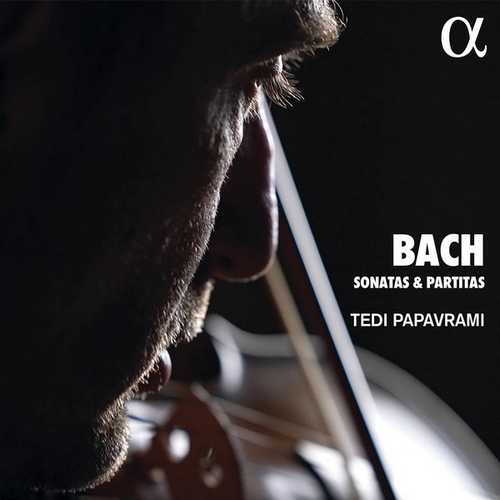

Composer: Johann Sebastian Bach
Performer: edi Papavrami
Number of Discs: 2
Format: FLAC (tracks)
Label: Alpha
Catalogue: ALPHA756
Release: 2021
Size: 2.52 GB
Recovery: +3%
Scan: yes
CD 01
Sonata for solo violin No. 1 in G minor, BWV1001
01. I. Adagio
02. II. Fuga
03. III. Siciliana
04. IV. Presto
Partita for solo violin No. 1 in B minor, BWV1002
05. I. Allemanda
06. II. Double
07. III. Courante
08. IV. Double
09. V. Sarabande
10. VI. Double
11. VII. Tempo di bourrée
12. VIII. Double
Sonata for solo violin No. 2 in A minor, BWV1003
13. I. Grave
14. II. Fuga
15. III. Andante
16. IV. Allegro
CD 02
Partita for solo violin No. 2 in D minor, BWV1004
01. I. Allemande
02. II. Courante
03. III. Sarabande
04. IV. Gigue
05. V. Chaconne
Sonata for solo violin No. 3 in C major, BWV1005
06. I. Adagio
07. II. Fuga
08. III. Largo
09. IV. Allegro assai
Partita for solo violin No. 3 in E major, BWV1006
10. I. Preludio
11. II. Loure
12. III. Gavotte en rondeau
13. IV. Menuet I
14. V. Menuet II
15. VI. Bourrée
16. VII. Gigue
‘One does not create by adding, but by subtracting’, said the film director Robert Bresson, quoted by Jacques Drillon in the booklet that accompanies this new recording of Bach’s Sonatas and Partitas for solo violin by Tedi Papavrami, seventeen years after a first version that already made quite an impact on the discography. Tedi Papavrami decided to start working on them again when he was in lockdown, and these pieces – which, in truth, he had never stopped playing – gave him new sensations: ‘something more alive, more sparkling appeared to me’… A more refined vision too: ‘Unquestionably, Tedi Papavrami did not want to be left behind. He too has become radicalised. He has dispensed with vibrato, aside from a few rare and delightful exceptions, and has renounced the emphatic basses, the brilliant high notes, and all the grandstanding effects that violinists usually indulge in, and which have characterised the most renowned interpretations, so much so that they are considered to be immutable “traditions”. Clearly, he has chosen to resort solely to phrasing and sonority in order to achieve expression’, says Jacques Drillon.



